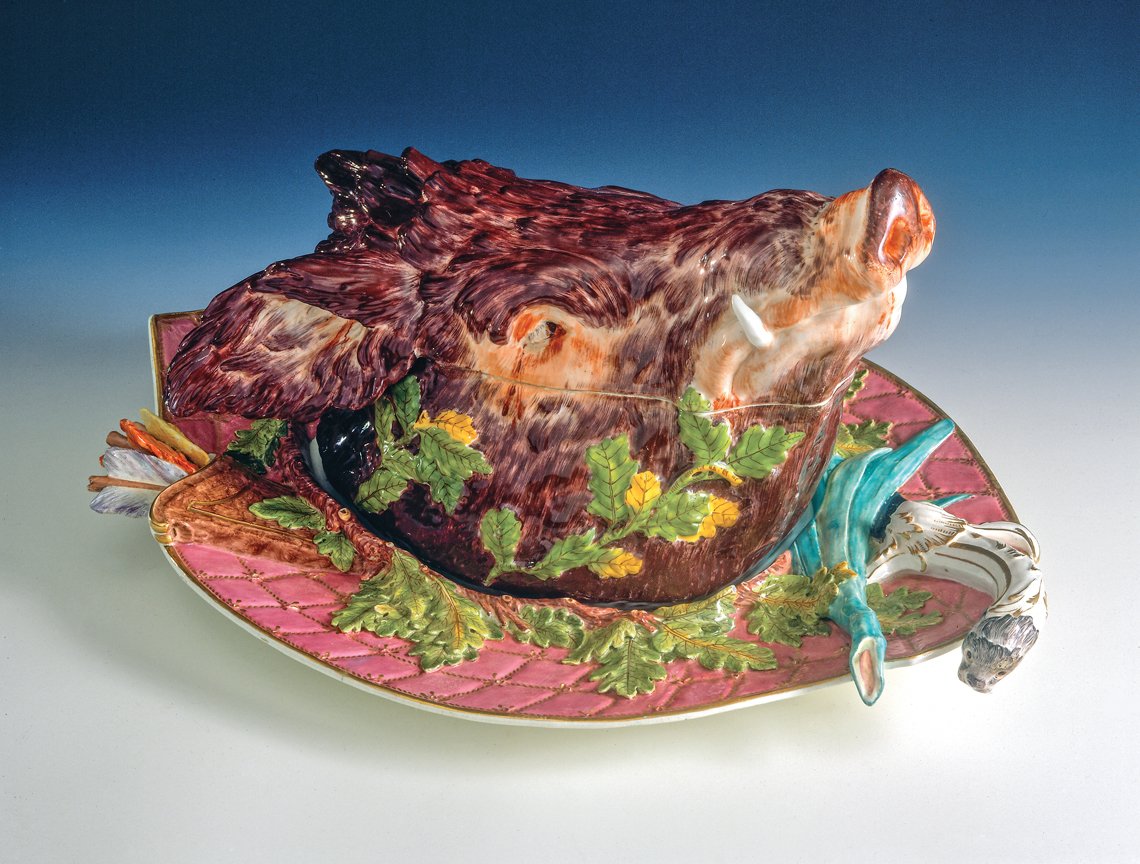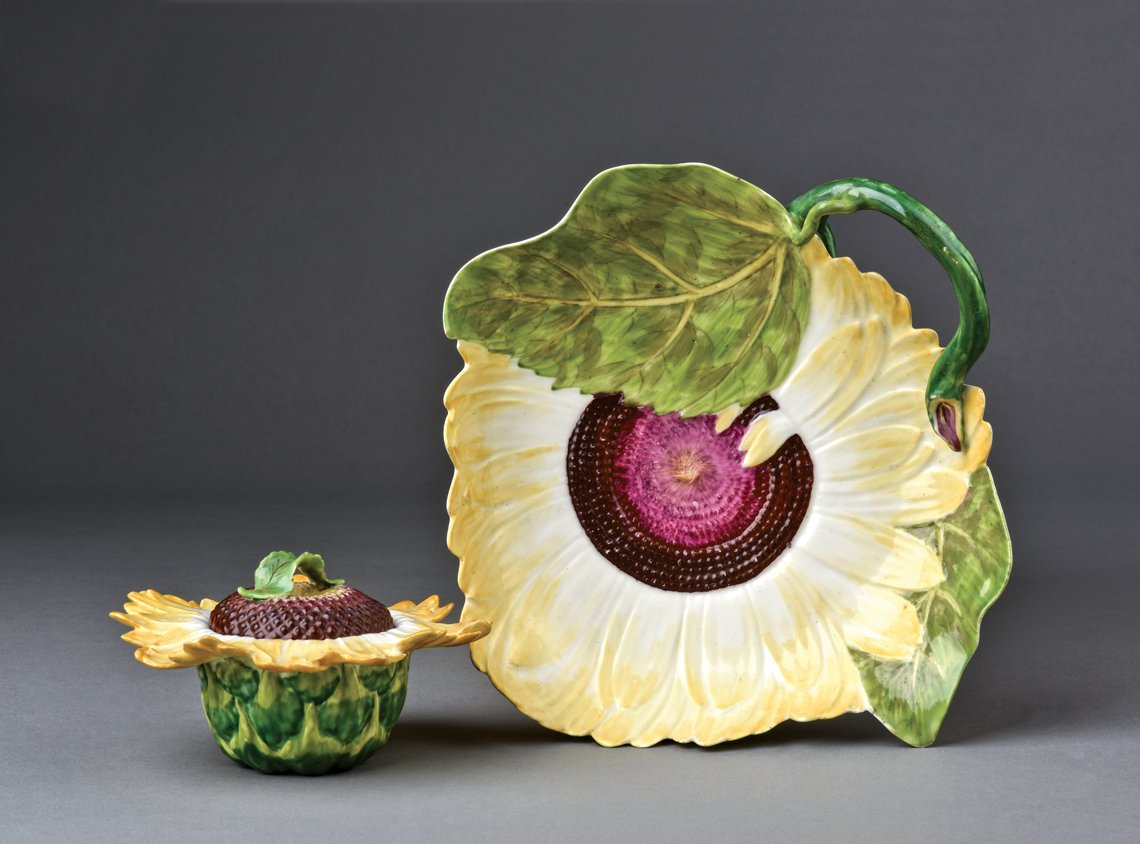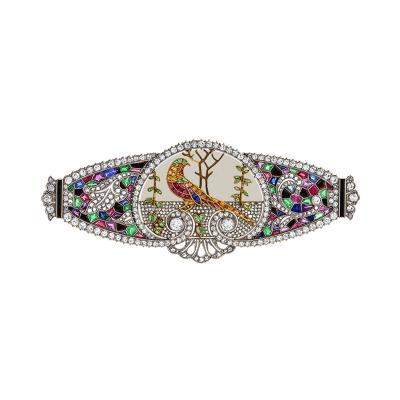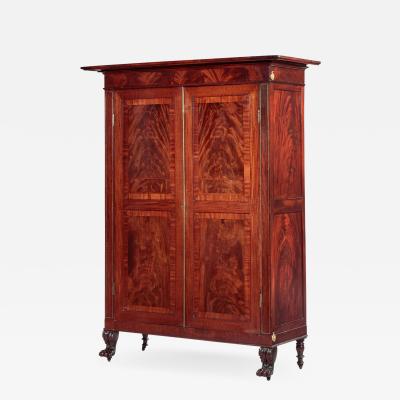Winterthur Primer: Nature Displayed on the Dinner Table
While many things have changed in our world, the love of nature-inspired motifs and forms as part of the dining experience continues from the past to today. Foods were drawn from the bounty of nature and, from the 1600s onward, a stunning range of dishes imitated the shapes of animals, birds, fruit and flowers or bore designs after such inspirations. Consumers who could not afford the most costly versions of such wares could often acquire imitations in less expensive materials or styles.
 |
Porcelain boar’s head tureen and stand, Chelsea Porcelain Manufactory, London, England, 1750–1760. Winterthur, Campbell Collection of Soup Tureens at Winterthur; Gift of John T. Dorrance, Jr. (1996.4.1a,b).
|
Ceramic boar’s head tureens were produced in Europe as well as China and were used to serve soups or stews. Such vessels echoed the tradition of serving real boars’ heads, which typically had the skull removed and the cavity stuffed with a broader variety of fillings. This rare, realistic Chelsea porcelain boar tureen has pierced nostrils that allowed fragrant steam to rise from the hot food within. The vessel rests on an oak leaf-garnished dish that gruesomely displays the instruments of the animal’s demise! A sheaf of arrows rests at one edge, and a long knife, for decapitating the beast, wraps around the other.
 |
Porcelain sunflower dish and stand, Chelsea Porcelain Manufactory, London, England, ca. 1754. Winterthur; Promised gift of Marjorie and John McGraw.
|
As also was true of the other dishes discussed here, dinnerware in the forms of fruit, vegetables, or flowers were interspersed with wares in other nature-inspired patterns. This elegant sunflower dish and stand would have been at home on a table displaying ornamental vases of garden blooms and ceramic or sugarwork figures of animals and birds. Nearby, fashionable dinner plates may have displayed detailed painted flowers and insects, inspired from imagery in a recently published natural history book.
 |
Porcelain sweetmeat or pickle stand with kingfisher, Derby Porcelain Factory, England, 1760–1770. Winterthur; Bequest of Mrs. Helen Shumway Mayer (2003.13.84).
|
Marine animals frequently served as inspiration for dinnerware. Here, a kingfisher, adept at hunting in both fresh and salt water, looks intently into three-dimensional seashells, elaborately arranged in a multilayered tier. Such objects might be used during a main course or dessert and, depending on the menu, held pickled foods or sweatmeats, such as nuts, dried fruit or candies. Some of the shells on this polychrome dish appear to have been molded directly off natural specimens, while others were modeled by hand. Shell-shape dishes were produced in earthenware, stoneware, and porcelain, and might be left in the white or painted in striking colors.
 |
In many cases, once the meal was over and the guests stepped away from the table, nature motifs continued to surround them, whether they were on upholstery fabrics, carved into the furniture, or adorned the walls as wallpaper, prints or paintings. Simply put, nature was everywhere, indoors and out! Have things changed all that much over the centuries? Perhaps not…
The nature-inspired objects shown here and hundreds more are featured in Dining by Design: Nature Displayed on the Dinner Table, on view at Winterthur Museum, Garden and Library (www.winterthur.org) through January 6, 2019.
Leslie B. Grigsby is senior curator of ceramics and glass at Winterthur Museum, Garden, and Library, Winterthur, Del.
This article was originally published in the 2018 Winter issue of Antiques & Fine Art magazine, a fully digitized version of which is available at www.afamag.com.










































